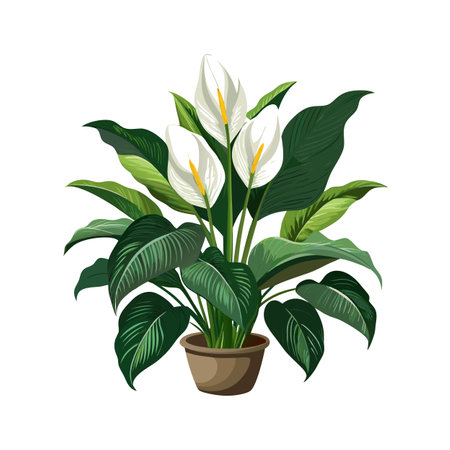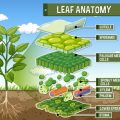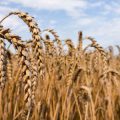Introduction to Foraging in the UK
Foraging has experienced a notable revival across Britain in recent years, with people of all ages seeking to reconnect with nature and discover the wild foods available throughout the countryside, woodlands, and even urban spaces. This renewed interest is fuelled by a desire for sustainable living, local sourcing, and the unique flavours that wild plants offer. However, the UKs rich biodiversity, while providing an abundance of edible options, also presents significant risks. Many poisonous plants closely resemble their edible counterparts, posing serious health hazards for inexperienced or casual foragers. As a result, accurate plant identification and adherence to safety guidelines have become crucial components of responsible foraging practices. Awareness and education are essential in ensuring that this rewarding activity does not lead to accidental poisoning or harm.
2. Commonly Mistaken Poisonous Plants
The British countryside is home to a wide variety of flora, some of which pose significant health risks due to their striking resemblance to edible species. Awareness of these plants is essential for anyone foraging or enjoying rural walks. Below is a detailed examination of the most commonly mistaken poisonous plants in the UK, with emphasis on their local prevalence and the edible species they are often confused with.
Deadly Nightshade (Atropa belladonna) vs. Blackcurrant
Deadly nightshade, known locally as belladonna, produces shiny black berries that can easily be mistaken for blackcurrants, especially by inexperienced foragers or children. However, ingestion of even a small amount of deadly nightshade berries can cause severe poisoning.
| Poisonous Plant | Edible Lookalike | Key Differences |
|---|---|---|
| Deadly Nightshade | Blackcurrant | Nightshade has duller leaves and purple-tinged stems; blackcurrant bushes have a distinct aroma when leaves are crushed. |
Hemlock (Conium maculatum) vs. Cow Parsley
Hemlock is notorious in British history and grows abundantly along riverbanks and hedgerows. Its feathery leaves and umbrella-like white flowers look almost identical to cow parsley, an edible wild herb. Hemlock contains potent toxins and should never be consumed.
| Poisonous Plant | Edible Lookalike | Key Differences |
|---|---|---|
| Hemlock | Cow Parsley | Hemlock stems have purple blotches; cow parsley stems are solid green and slightly hairy. |
Lords-and-Ladies (Arum maculatum) vs. Wild Garlic
Lords-and-ladies, also called wild arum or cuckoo-pint, is frequently found in woodlands where wild garlic also thrives. While wild garlic is prized for its culinary uses, every part of lords-and-ladies is toxic and can cause severe irritation if ingested or handled without care.
| Poisonous Plant | Edible Lookalike | Key Differences |
|---|---|---|
| Lords-and-Ladies | Wild Garlic | Lords-and-ladies leaves are glossy with arrow-shaped tips; wild garlic emits a strong garlic smell when crushed. |
Additional Notable Examples
- Foxglove (Digitalis purpurea) – sometimes mistaken for comfrey due to similar leaf shape but contains cardiac toxins.
- Daffodil bulbs – occasionally confused with onions by gardeners, leading to accidental ingestion.
Summary Table: Commonly Confused Poisonous Plants in the UK
| Poisonous Plant | Mistaken For | Main Hazard |
|---|---|---|
| Deadly Nightshade | Blackcurrant | Nerve toxin causing delirium and death in severe cases. |
| Hemlock | Cow Parsley | Neurotoxin; even handling may cause skin reactions. |
| Lords-and-Ladies | Wild Garlic | Irritation of mouth/throat; gastrointestinal distress. |
This overview highlights the importance of careful identification when interacting with Britain’s wild plants. The consequences of misidentification can be severe, underscoring the need for vigilance and local knowledge during any outdoor activity involving plant collection or consumption.

3. Key Examples: Edible vs. Toxic Lookalikes
Foraging for wild plants is a cherished British pastime, but the similarity between certain edible species and their toxic counterparts can lead to serious health risks. Understanding these key plant pairs is crucial for anyone considering gathering food from the countryside.
Wild Garlic (Allium ursinum) vs. Lily of the Valley (Convallaria majalis)
Wild garlic, beloved for its mild garlicky flavour, grows abundantly in damp woodlands across the UK during spring. Its broad, vibrant green leaves, star-shaped white flowers, and distinctive garlic aroma make it a seasonal favourite. However, Lily of the valley, which shares similar leaf shape and growing habitats, is highly poisonous and lacks any garlicky scent. Accidental ingestion can cause severe gastrointestinal distress and cardiac issues. The key differentiator is smell: crushing a wild garlic leaf releases a clear garlic aroma, whereas lily of the valley remains odourless.
Alexanders (Smyrnium olusatrum) vs. Hemlock Water Dropwort (Oenanthe crocata)
Alexanders, an edible plant once popular in medieval British cooking, often grows near coastal areas and hedgerows. Its glossy leaves and yellow-green flower umbels can be confused with those of Hemlock water dropwort, one of the UKs deadliest plants. Both are members of the carrot family, but hemlock water dropwort’s roots resemble parsnips and contain potent neurotoxins that can be fatal even in small amounts. Foragers should note that Alexanders have a celery-like smell when crushed, whereas hemlock water dropwort does not.
Bilberries (Vaccinium myrtillus) vs. Deadly Nightshade (Atropa belladonna)
Bilberries, also known as whortleberries or blaeberries in parts of Britain, are small blue-black berries found on low shrubs in moorland and woodland areas. Their edible fruits are sweet-tart and safe when properly identified. However, deadly nightshade produces shiny black berries that grow singly on the plant rather than in clusters like bilberries. Nightshade’s foliage emits an unpleasant odour and its berries contain atropine—a potentially lethal compound causing hallucinations and heart irregularities if consumed.
Takeaway for Safe Foraging
The overlapping habitats and superficial similarities among these plant pairs highlight the importance of careful identification based on multiple features—such as scent, growth pattern, berry arrangement, and flowering structure—rather than relying solely on appearance. Consulting reputable field guides or local experts remains essential before consuming any wild plants in the UK.
4. Recognising and Distinguishing Features
Foraging in the British countryside offers a rewarding connection to nature, but it also comes with significant risks due to several poisonous plants that closely resemble edible species. To help amateur foragers avoid accidental poisoning, understanding and recognising the distinguishing features of both safe and hazardous plants is essential. Below are practical tips focused on visual cues, smell, and texture—three key senses that can guide your identification process.
Visual Cues: Key Differences at a Glance
Many toxic plants mimic the appearance of well-known edibles. Attention to specific characteristics can prevent misidentification. The following table highlights some of the most commonly confused pairs:
| Edible Plant | Lookalike Poisonous Plant | Key Visual Differences |
|---|---|---|
| Wild Garlic (Allium ursinum) | Lily of the Valley (Convallaria majalis) | Wild garlic leaves are soft, broader, and emit a strong garlic scent when crushed; Lily of the Valley has narrower, stiffer leaves and no garlic aroma. |
| Alexanders (Smyrnium olusatrum) | Hemlock (Conium maculatum) | Alexanders have yellow-green flowers in umbels and smooth stems; Hemlock features purple-spotted stems and finely divided leaves. |
| Bilberry (Vaccinium myrtillus) | Deadly Nightshade (Atropa belladonna) | Bilberry produces small blue-black berries on low shrubs; Deadly nightshade has larger, shiny black berries on taller, bushy plants with oval leaves. |
Smell: Trust Your Nose
Olfactory inspection is often an underused but highly reliable method. For example, wild garlic emits a pungent aroma easily distinguishable from its toxic counterparts. If a plant lacks this characteristic smell or smells unpleasantly chemical or bitter, err on the side of caution and do not consume it.
Tactile Texture: A Subtle Indicator
The feel of a leaf or stem can offer additional clues. Edible species such as nettles (once blanched) have a softer texture compared to lookalikes like foxglove, which feels waxy or slightly rough. Always handle unfamiliar plants with care—use gloves if unsure—to avoid exposure to irritants.
Summary Table: Sensory Checks for Safety
| Sensory Method | What to Check For |
|---|---|
| Visual | Leaf shape, colour, vein pattern, stem markings, flower structure |
| Smell | Pungency (e.g., garlic), absence/presence of chemical odours |
| Texture | Smoothness, presence of hairs or waxiness, moisture content |
Cultivating an informed approach by cross-referencing these sensory details dramatically increases safety while foraging in the UK. If ever uncertain about a plant’s identity, it is always best to leave it untouched and consult an expert before consumption.
5. Consequences of Consumption and First Aid
Recognising Typical Symptoms
Accidental ingestion of poisonous plants commonly mistaken for edible species in the UK can result in a wide range of symptoms, depending on the plant involved and the amount consumed. Early signs often include nausea, vomiting, abdominal pain, and diarrhoea. Some toxins may cause neurological effects such as confusion, dizziness, hallucinations, or seizures. In severe cases, symptoms may escalate to breathing difficulties, cardiac arrhythmias, or loss of consciousness. It is important to note that children and pets are particularly vulnerable to rapid onset of toxic effects due to their smaller body mass.
Immediate Actions: First Response Guidance
If you suspect someone has ingested a poisonous plant, it is vital to act swiftly and follow established first aid protocols. Do not induce vomiting unless specifically advised by medical professionals. Remove any remaining plant material from the mouth, taking care not to touch it directly with bare hands. Rinse the mouth thoroughly with water if possible.
Contacting UK Emergency Services
Call 999 for urgent medical assistance and provide clear information about the situation. If possible, identify the plant involved and keep a sample for medical staff. The NHS advises bringing any relevant packaging or plant matter to A&E if hospitalisation is necessary. For less severe cases or uncertainty, contact NHS 111 for guidance on next steps.
Key Points for Prevention and Response
Speedy recognition of symptoms and prompt professional intervention are crucial in reducing health risks associated with poisonous plant ingestion. Always supervise children in unfamiliar outdoor environments and educate family members about common hazardous species in your local area. When foraging or gardening, err on the side of caution—if in doubt, leave it out.
6. Responsible Foraging: Safety Tips and Local Guidelines
Responsible foraging is essential to avoid the risks posed by poisonous plants that are often mistaken for edible species in the UK. Practising safe and sustainable foraging not only protects your health but also preserves local ecosystems for future generations.
Best Practices for Safe Foraging
- Accurate Identification: Never consume a wild plant unless you are 100% certain of its identity. Use reputable field guides, such as those published by the Botanical Society of Britain & Ireland (BSBI), or apps like PlantNet, and consult multiple sources when in doubt.
- Take a Foraging Course: Participating in guided foraging walks with local experts can improve your skills and confidence. Organisations such as The Woodland Trust or The Wild Food UK offer workshops across the country.
- Avoid Risky Lookalikes: Be especially cautious with plants that have dangerous lookalikes, such as Hemlock (Conium maculatum) which is sometimes confused with Cow Parsley (Anthriscus sylvestris).
UK-Specific Legal Regulations
- The Countryside Act 1981: Picking wild plants is generally permitted for personal use, but uprooting any wild plant without landowner permission is illegal under this Act.
- Protected Species: Some plants are protected under the Wildlife and Countryside Act; picking or disturbing these species is prohibited. Always check Natural England’s list of protected flora before foraging.
- Access Rights: Respect private property and only forage on public land or with explicit permission from landowners. Many National Trust sites have their own regulations regarding foraging—always check local signage or websites.
Conservation Considerations
- Sustainable Harvesting: Take only what you need, leaving enough for wildlife and plant regeneration. Follow the “one-in-twenty” rule: harvest no more than one part out of every twenty to ensure sustainability.
- Avoid Sensitive Habitats: Do not forage in nature reserves, SSSIs (Sites of Special Scientific Interest), or areas where rare species may grow, as this can disrupt delicate ecosystems.
Further Resources
- The Royal Horticultural Society (rhs.org.uk) offers guidance on plant identification and poisonous species.
- The BSBI (bsbi.org) provides up-to-date distribution maps and ID resources.
Key Takeaway
By following these safety tips, adhering to UK laws, and using reliable identification resources, you can enjoy the benefits of wild foraging while minimising risk and supporting local biodiversity. When in doubt, always err on the side of caution—when it comes to wild plants, it’s better to leave it than risk it.


